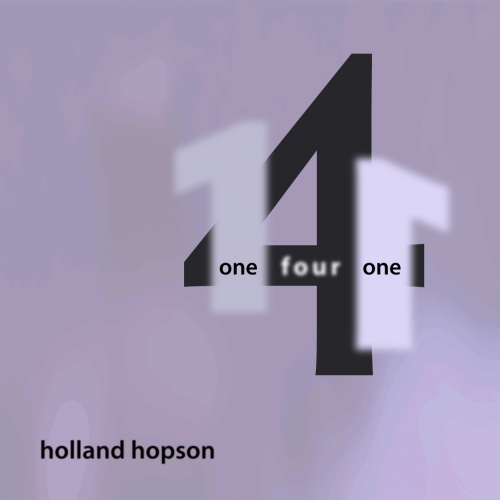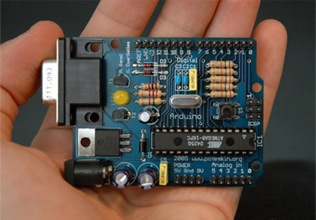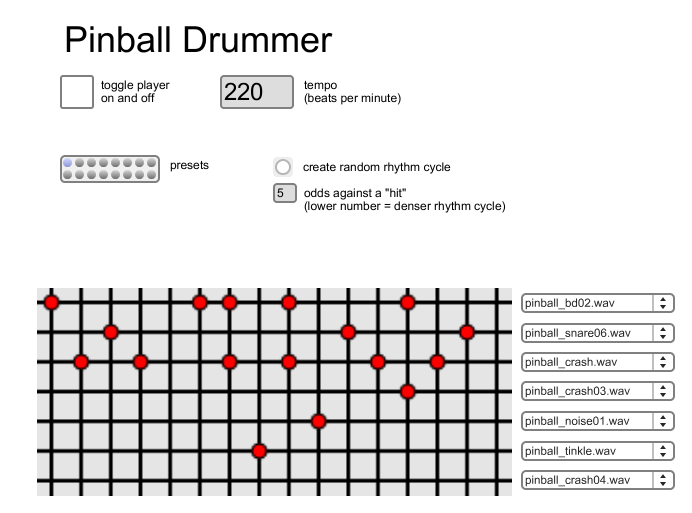Here are few favorite picks of recorded media, live shows and print from 2009. As usual, I’m not much of an up-to-the-minute consumer so some of this may be old news. The exception here are the live shows, of course, so let’s start there…
Live Music
My two favorite shows were at EMPAC. The pummeling dished out by The Boredoms + 9 drummers easily takes the top spot. Garth Knox’s viola and viola d’amore might have been the polar opposite of The Boredoms but was no less riveting. I was also mightily impressed with 2009 ASAC guests Area C and Ben Bracken.
Recorded Music
The only new release on my list this year is Take Me To the Water from Dust to Digital. It’s a solid (maybe even stolid) collection of gospel–no real surprises or major standouts. But combined with the beautiful book I know I’ll be returning to this one often.
Two older CDs of music by Arthur Russel and Julius Eastman are now safely ensconced in my desert island collection:
Arthur Russel World of Echo
Where has this record been all my life? I had heard Russel’s avant-disco but was unprepared for the intimacy and sweet strangeness in this recording.
Julius Eastman Unjust Malaise
A life-changing collection of prescient music from a singular talent. There are so many standouts in this collection that it’s hard to choose a favorite.
And some assorted highlights from the year’s listening:
The Hub The Hub & Wreckin’ Ball
Tim Perkis/John Bischoff Artificial Horizon
Some of the synthesized sounds on these records date them, yet no one has better explored the potential for musicking with communication technology. The Hub is still at the heart of the genre, and sadly the genre is still too small. Maybe all those laptop orchestras with their hemi speakers will carry on some this work. They would do well to revisit these recordings.
Junior Kimbrough and the Soul Blues Boys All Night Long
Languorous sound that builds a Calatrava-style bridge between a juke-joint in Mississippi and the sacred sites of minimalism, drone and raga. On second thought, maybe that juke-joint in Mississippi IS a sacred site of minimalism, drone and raga.
Art of Field Recording Volume I
Another Dust to Digital release. I lived with these recordings for most of the year–and won’t be forgetting them soon.
Gloria Coates Symphonies Nos. 1, 7 and 14
This was recommended to me when it first came out. I’m sorry I missed it until this year.
Books
This is Your Brain on Music by Daniel Levitan was probably the most fun I’ve had thinking about music and sound in a while. His Six Songs is less interesting/convincing, but a good intro to questions about music and evolution.
I enjoyed John Adams‘s Hallelujah Junction more than I expected, based on my experience with Adams’ music. (When will John Luther Adams write a book?) I found his tales about his origins and development illuminating and his writing refreshingly frank. It was especially interesting to read about his life in San Francisco during the 1960s which leads to…
The San Francisco Tape Music Center: an excellent overview of an under-appreciated group of electronic music pioneers and their fascinating intersections with popular culture. This collection puts a new spin on the usual Columbia/Princeton/Bell Laboratory history of electronic music in the US.
Music Technology
I expected 2009 to be about Max for Live, but I never got around to buying Live and then had no reason to get Max for Live. Instead, the one piece of music gear that’s made the most impact on my work in 2009 is an 1860’s style fretless tackhead banjo built by Eric Prust.
Back to the software side, the most notable music software I used this year was for the iPhone
Cleartune is easily the best tuner I’ve ever used. It still makes me a little giddy at how wonderful it is to be able to switch between equal tempered tunings and all manner of Pythagorean, just, meantone and historical tunings. My trusty clip-on tuner finally died this year; I’m not sure I’ll replace it.
SoundLevel is a free, bare-bones sound level meter app. I haven’t upgraded to SoundLevel Pro because the free app does me just fine. The convenience of always having a sound level meter on hand means that I’m much more likely to use it. In fact, it’s become an important step every time I set up a PA or go to a friend’s house to listen to mixes. Not to mention the ability to quickly check how loud that blender really is–time to put in earplugs!
On the productivity/inspiration side of things, OmniFocus for iPhone is essential for me. And the iPhone’s built-in Voice Memos app has become my favorite way to capture a sonic idea or lyric phrase–if only there were a better way to offload those files to my machine rather than having to go through iTunes…
Looking ahead to 2010
Maybe 2010 will be my time for Live and Max for Live. I’ve just started dipping into the Pinewoods International Collection of folk tunes and I expect the book will occupy me for most of next year. I’m hoping that by 2011 I’ll be able to frail my way with ease through all those odd time signatures. Finally, I’m looking forward to making more field recordings with my recently beefed-up rig which now includes a Fostex FR2-LE and a Rode Blimp.



 I saw this “cyber” Monday special from
I saw this “cyber” Monday special from 

